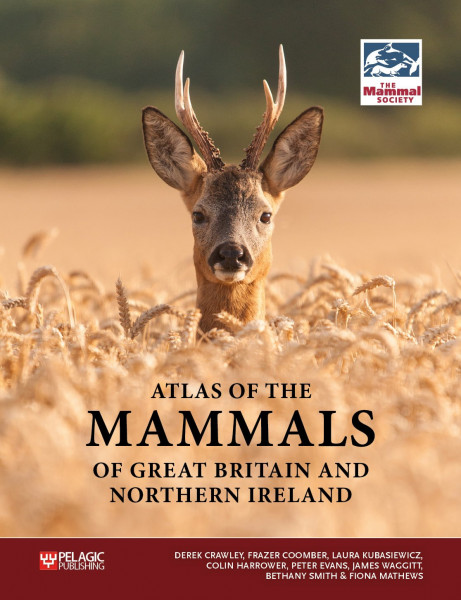
Publisher: Pelagic Publishing, Exeter
Publication Year: 2020
Binding: 2
Page Count: 197
ISBN Number: 9781784272043
Price: £35.00
Atlas of the Mammals of Great Britain and Northern Ireland
This is the first national Mammal Atlas to be published since 1993 (Atlas of Mammals in Britain by Henry Arnold) and documents changes in recorded distribution between 1960 and 2016. It is aimed as an essential reference for ecological consultants wishing to know which species of protected mammals could potentially be affected by a development in a particular area.
It is a culmination of many years’ worth of work in compiling data from records made in a variety of ways; from the old-fashioned method with pen and paper to taking advantage of modern developments in ‘citizen science’. From the foreword, it is clear that this has been a passion project for many people. Initially spear-headed by Derek Yalden, the previous president of the Mammal Society (sadly deceased in 2013), it has been a large collaborative effort between hundreds of organisations and contributors.
This is a concise book, covering the broad strokes of the distribution of all mammals (both terrestrial and cetaceans) found in the UK and includes summaries of vagrant species, those without established populations and feral colonies and populations.
84 species are covered in further detail with two-page species accounts giving concise summaries of distribution, ecology and identification. Also included in the species accounts is a distribution map and a graph showing the seasonal distribution of records (only between 2000-2016). The resolution for the distribution maps is 10 km, so it is not suitable for those looking to see species distribution at a county or local level.
The data are sourced from many places, including public bodies, conservation organisations, universities, local biological record centres and by members of the public using publically available recording tools such as iRecord and the Mammal Tracker app. This has resulted in a vast amount of data contributing to the Atlas which have been verified by the Mammal Society. There are only a small number of species that have been included which have not been verified as they are unlikely to be misidentified (Moles Talpa europaea, Rabbits Oryctolagus cuniculus, Badger Meles meles, Foxes Vulpes vulpes and Hedgehogs Erinaceus europaeus).
In the methods chapter, the authors admit that ‘There may be discrepancies between the Atlas maps and the known distributions of some species’, without stating which species may be inaccurate. This is explained to be due to a variety of reasons, including the possibility of false presence records if the species can be easily misidentified and that some data-sharing agreements mean that some records might not have been accessible. Therefore, the authors state that ‘the maps will only be as good as the available records… many will represent the actual species distribution as well as, to some extent, the distribution of observers’.
However, this Atlas provides a good summary of the mammals found in the UK and can be treated as a starting point for investigating a specific species’ distribution. Bibliographies have been provided in each species account which can be used to gain a more accurate and up-to-date picture of where the species is distributed and how healthy their populations within the UK are.
Book reviewed by Gillian Birtles
Buy this book




Share this page